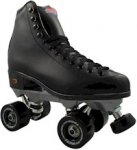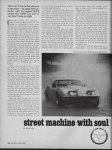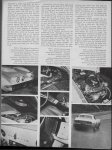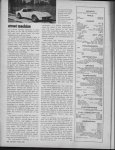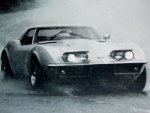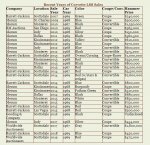What minor errors, you may well ask?
1. At the 1:50 point in the video, he starts talking about the differences that make the L88 (430hp) much more powerful than the L71 (435hp). He lists things like higher compression (true, 12.5:1 for the L88; 11.0:1 for the L71), but then mentions "solid lifters" as if they were exclusive to the L88. Not so. The L71 also had solid lifters.
2. He talks about an aluminium intake as if that also was exclusive to the L88. Wrong. Both had them.
3. Chevrolet rated the L88 at much lower rpms than they usually do for other engines (true). At the 4:05 point in the video, he states that the L88 was rated at 430hp @
4,600 rpm. But then, at the 5:40 point, he states, "430hp at
5,300 rpm". Hmmmm. It can't be both. The actual 430hp rating for the L88 (and the later ZL1) was published, by Chevrolet, @ 5,200 rpm. By the way, the L71's 435hp rating was recorded at 5,800 rpm.
4. At the 6:03 point, he states that Chevrolet built
30 L88 Corvettes in 1967. The actual number is
20.
1967 -
20 (12.5:1 compression) (selling for up to US$3,500,000)
1968 - 80 (12.5:1 compression)
1969 -116 (12.0:1 compression)
The differences between the L71 and the L88 are not as deep down as we are led to believe. For example, the 427 block, in 1968, was the same for both engines. #3916321 for the early '68 model run. #3935439 for the late '68 model run. The exhaust manifolds on both engines were identical. The main areas of difference were in compression (significantly higher in L88), camshaft profile (L88 more radical), heads (L88 were aluminium, L71 were cast iron, although adding RPO L89 to RPO L71 got you aluminium heads there too), larger intake and exhaust valves on the L88, and a single 4bbl Holley (L88) rather than 3x2bbl Holleys (L71). If is far from impossible to build a L88-clone from a L71, but I'd start fresh if I were you. ;-)
Why do I nitpick on these errors? Because, over the years, the truth gets muddied. Before you know it, everybody owned one of these cars back in the day.

What minor errors, you may well ask?
1. At the 1:50 point in the video, he starts talking about the differences that make the L88 (430hp) much more powerful than the L71 (435hp). He lists things like higher compression (true, 12.5:1 for the L88; 11.0:1 for the L71), but then mentions "solid lifters" as if they were exclusive to the L88. Not so. The L71 also had solid lifters.
2. He talks about an aluminium intake as if that also was exclusive to the L88. Wrong. Both had them.
3. Chevrolet rated the L88 at much lower rpms than they usually do for other engines (true). At the 4:05 point in the video, he states that the L88 was rated at 430hp @
4,600 rpm. But then, at the 5:40 point, he states, "430hp at
5,300 rpm". Hmmmm. It can't be both. The actual 430hp rating for the L88 (and the later ZL1) was published, by Chevrolet, @ 5,200 rpm. By the way, the L71's 435hp rating was recorded at 5,800 rpm.
4. At the 6:03 point, he states that Chevrolet built
30 L88 Corvettes in 1967. The actual number is
20.
1967 -
20 (12.5:1 compression) (selling for up to US$3,500,000)
1968 - 80 (12.5:1 compression)
1969 -116 (12.0:1 compression)
The differences between the L71 and the L88 are not as deep down as we are led to believe. For example, the 427 block, in 1968, was the same for both engines. #3916321 for the early '68 model run. #3935439 for the late '68 model run. The exhaust manifolds on both engines were identical. The main areas of difference were in compression (significantly higher in L88), camshaft profile (L88 more radical), heads (L88 were aluminium, L71 were cast iron, although adding RPO L89 to RPO L71 got you aluminium heads there too), larger intake and exhaust valves on the L88, and a single 4bbl Holley (L88) rather than 3x2bbl Holleys (L71). If is far from impossible to build a L88-clone from a L71, but I'd start fresh if I were you. ;-)
Why do I nitpick on these errors? Because, over the years, the truth gets muddied. Before you know it, everybody owned one of these cars back in the day.

More to come...but for Heaven's sake,
let's hear from YOU. Let's prove that British reserve is just a stereotype.
I saw the vid earlier and noted your comments re mis-information and came back today to find your post to ask about
More to come...but for Heaven's sake,
let's hear from YOU. Let's prove that British reserve is just a stereotype.

